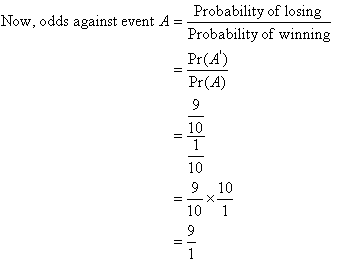Odds Converted To Probability
By convention only a set of fractions are used in fractional odds betting markets. The set does not include exact mathematical equivalents to all possible decimal and American odds. We use the closet fraction that is used in betting markets.
- How do i convert probability to odds? To convert from probability to decimal odds: 1/(probability/100) Example: 40% probability = 1/(40/100) = 2.50. How to get the best odds. Before placing a bet you should always compare odds. A pro knows that when you place a bet you must have an advantage.
- Have you ever wondered what the chances of a team winning was based off of the money line for the game? That’s a key part of understanding money line bets.First, we have a simple calculator that you can use to plug in any moneyline (American style odds) and quickly get the fair market probability.
- Negative odds - The probability divided by (1 minus (the probability divided by 100)) then multiply by -1 to convert into a negative e.g. A probability of 60% = (60 / (1 - (60/100))).1 = -150. How do you convert american odds to decimal? Positive odds - 1 plus (the american odds divided by 100) e.g. American odds of 300 = 1 + (300/100) = 4.
For example, the exact mathematical equivalent of decimal odds 30 is fractional odds 29/1. However 29/1 is not used in betting markets, instead 30/1 is used, so that is what appears in this converter.

For an explanation of the odds types on this table see decimal, fractional and American odds. To find out what the numbers really represent see understand odds as probability with overround.
Convert Fractional odds to probability. The most common form of odds are going to be decimal odds in the UK and here is how to convert decimal odds to probability.These are clear odds to read and for example the 6/5 odds on Liverpool from the example above means that for every 5 units you put on, you will receive 6 back as a profit.
You may also like
Chance can be expressed either as a probability or as odds. In most contexts, there is no particular reason to prefer one over the other. Most scientists tend to feel more comfortable thinking about probabilities than odds, but that is a matter of training and custom, not logic.
The distinction is simple:
- The probability that an event will occur is the fraction of times you expect to see that event in many trials. Probabilities always range between 0 and 1.
- The odds are defined as the probability that the event will occur divided by the probability that the event will not occur.
Convert Odds Ratio To Probability Stata

A probability of 0 is the same as odds of 0. Probabilities between 0 and 0.5 equal odds less than 1.0. A probability of 0.5 is the same as odds of 1.0. Think of it this way: The probability of flipping a coin to heads is 50%. The odds are “fifty: fifty,” which equals 1.0.

As the probability goes up from 0.5 to 1.0, the odds increase from 1.0 to approach infinity. For example, if the probability is 0.75, then the odds are 75:25, three to one, or 3.0.
If the odds are high (million to one), the probability is almost 1.00. If the odds are tiny (one to a million), the probablility is tiny, almost zero.

Converting between odds and probability is straightforward:
- To convert from a probability to odds, divide the probability by one minus that probability. So if the probability is 10% or 0.10 , then the odds are 0.1/0.9 or ‘1 to 9’ or 0.111.
- To convert from odds to a probability, divide the odds by one plus the odds. So to convert odds of 1/9 to a probability, divide 1/9 by 10/9 to obtain the probability of 0.10.